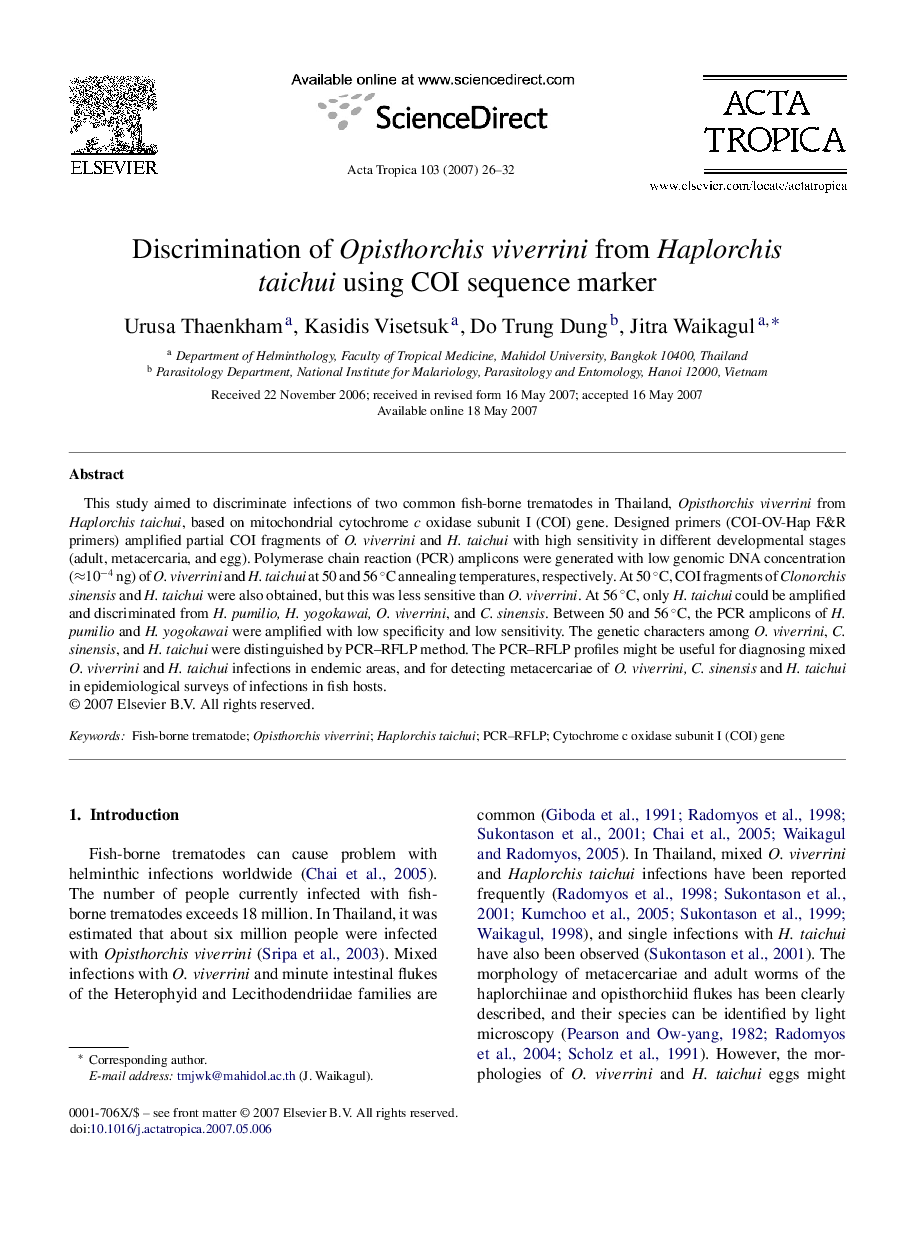| Article ID | Journal | Published Year | Pages | File Type |
|---|---|---|---|---|
| 3394522 | Acta Tropica | 2007 | 7 Pages |
This study aimed to discriminate infections of two common fish-borne trematodes in Thailand, Opisthorchis viverrini from Haplorchis taichui, based on mitochondrial cytochrome c oxidase subunit I (COI) gene. Designed primers (COI-OV-Hap F&R primers) amplified partial COI fragments of O. viverrini and H. taichui with high sensitivity in different developmental stages (adult, metacercaria, and egg). Polymerase chain reaction (PCR) amplicons were generated with low genomic DNA concentration (≈10−4 ng) of O. viverrini and H. taichui at 50 and 56 °C annealing temperatures, respectively. At 50 °C, COI fragments of Clonorchis sinensis and H. taichui were also obtained, but this was less sensitive than O. viverrini. At 56 °C, only H. taichui could be amplified and discriminated from H. pumilio, H. yogokawai, O. viverrini, and C. sinensis. Between 50 and 56 °C, the PCR amplicons of H. pumilio and H. yogokawai were amplified with low specificity and low sensitivity. The genetic characters among O. viverrini, C. sinensis, and H. taichui were distinguished by PCR–RFLP method. The PCR–RFLP profiles might be useful for diagnosing mixed O. viverrini and H. taichui infections in endemic areas, and for detecting metacercariae of O. viverrini, C. sinensis and H. taichui in epidemiological surveys of infections in fish hosts.
